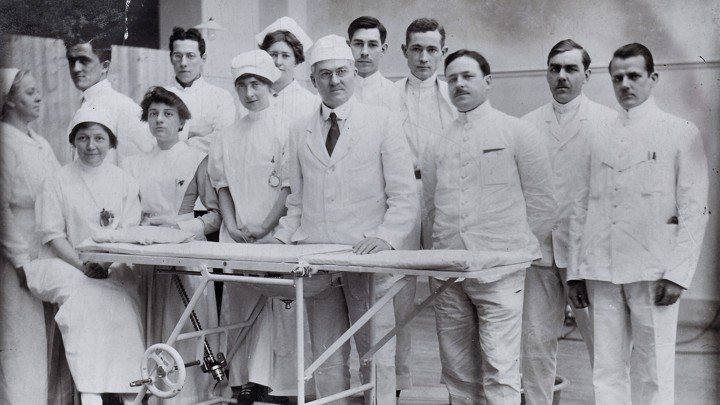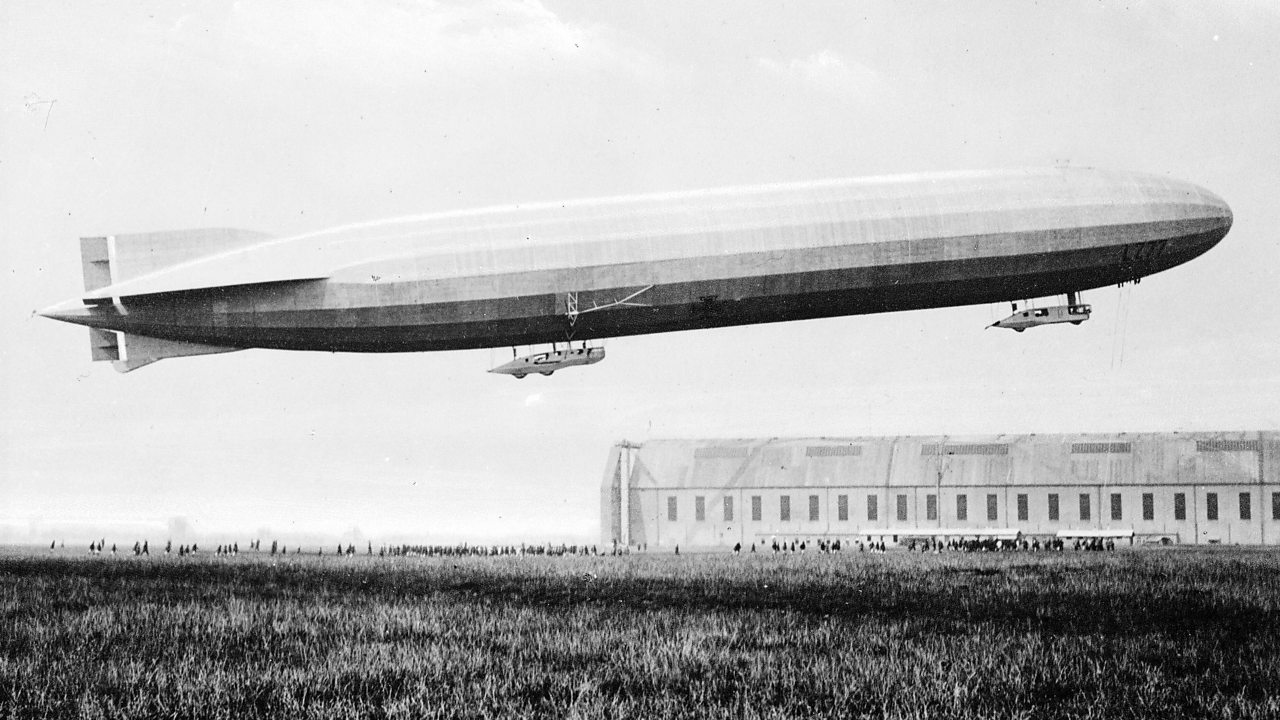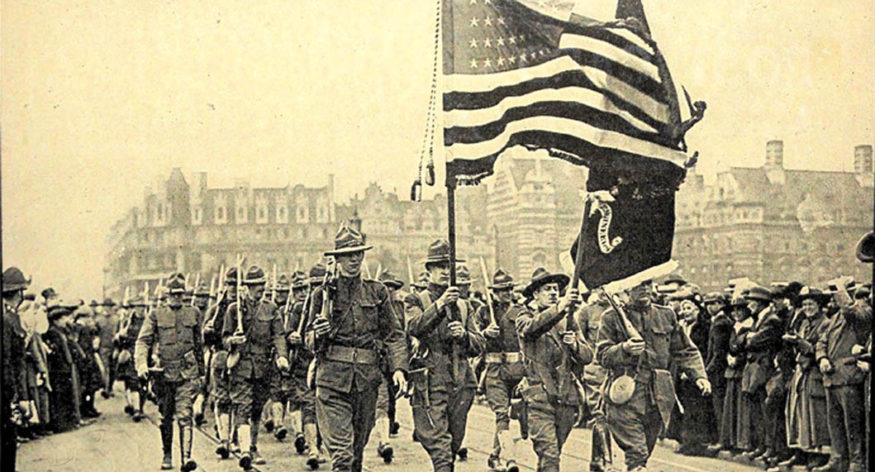Chapter 27: Breaking Point
As the Winter of 1906 Came and left the front remained mostly static once again. Developments in the East as continued to move, mostly in Southeast Asia where Japan continued to struggle against the Khitan ANZAC expeditionary, while in Africa the Bohemian and Scandinavian expeditionary forces continued a fighting retreat further into central africa where local alliances granted them a defensive advantage in both terrain and supply.
With the the Fronts of Aquitaine and Persia blown open however the coming spring of 1907 was quickly shaping up into a bloodbath as new entrenchments were prepared and new weapons of war were devised on all sides to break them apart. The Two Year Stalemate had ended, The War was about to move, but the willingness on all levels was mixed.
At home in the Khitan Empire a group of Scientists, Doctors and Engineers signed the so called February Conscientious objection as a new wave of drafts were signed and approved by the Conservative Socialist led Coalition. While initially the number of signatories were small, by the wars end the document had held the names of almost a third of the Khitan Scientific community and had sponsored similar acts by intelligentsia in Bohemia and the Latin Empire. Notably, Famed Atomic Physicist Anton Braunmeyer was an original signatory who had recently published the results of tests regarding light's behavior during solar eclipses, taken during the 1900 Solar Eclipse from the University of Norfolk in America.
On the other side however, many Scientists instead had taken a more national stance taking Government stipends for the funding of research along defense lines. Among their own discoveries in this time were advancements in regards to combustion engines, theories lift based vehicles, the militarization of airships of which the Khitan Empire had recently adopted into the Republican Army Aeronautical Core. At least 3 so called 'Airships' had been ordered for reconnaissance duty on the relatively expansive German front while a 4th and Final Airship was being developed in coordination with the British for deployment in the expansive North Sea Theater.
In The Middle East, the Kingdom of Arabia had effectively been knocked out of the war thanks to Japanese, Italian and Persian forces flooding into the Peninsula following the capture of Bagdad. The Arabians who had spent much of their own military power on the Persian Meat Grinder were relatively defenseless, and rather than face capture and surrender, Muammar al-Kanan, the Sultan and his immediate family fled the capital to rule in exile in Jerusalem
At Sea the Japanese Fleet had decided to finally strike out at the Khitan Pacific fleet moored in Singapore Harbor as the precursor to a full scale Invasion by Japanese and Shan Forces into the Valuable Peninsula. Admiral Jules Nemoria having received faulty intelligence on the strength of the Japanese fleet had sailed much of the fleet out out rather than wait for the British Fleet, based in Brunei to reinforce. On the 28th of March at 0300 Hours the First Shots were fired by the Japanese Battleship Kashima who fired at what was originally thought to be a Khitan Convoy moving to reinforce the Garrison at Saitan Island. Roughly Ten Minutes later the full force of the Khitan Pacific Fleet arrived and the Battle of Saitan had begun.
For the next Sixteen Hours the two fleets exchanged salvos in what would ultimately be considered the largest naval battle fought with modern ships. While initially the Japanese fleet had a solid edge in numbers and technology that continually were hounded by coastal defense guns from the Riau Archipeligo which while not particularly modern for the time, posed a serious threat to Japanese Capital ships which were built larger and slower than European ships. By the time Telgraphs had arrived to the british the battle had already been ongoing for Seven Hours and at least two major battleships, the Japanese Yamishiro and the Khitan Prince Jing while many other light craft had been sunk or held significant damages. Upon the Arrival of the British the Japanese withdrew having inflicted severe losses on the Khitan fleet but having taken severe losses themselves. Both Naval commands would ultimately deem their Pacific fleets to be utterly inoperable in the short term leaving the Japanese in an awkward position of having to delay the crucial invasion of Malaya leaving Khitan Rubber Shipments able to continue freely under the watchful eye of the British Navy.
In Eastern Europe the Main thrust had shifted away from Prague, which the Bohemians had retaken with force and shifted further North. Under President Waverly, the stratagems that called for Siphoning Scandinavia into the German front were permanently shelved. The Bohemians had since shifted much of thier attention on ending the war with Greece and protecting thier own capital and as a result much of Poland had been weakened as a result.
The City of Danzig, Crucial for its place as a port up for the majority of Prussian and Polish industry had become the Northern Campaign's Primary objective. Crossing the Vistula River and completing control over the city however was no easy task however, meaning that further troops desperately needed for other fronts were now being sent by rail North to Danzig to die. The surface level justification being that a capture of Danzig would cut off the crucial flow of Scandinavian Iron ore and Tungsten to Bohemia, while full plans were made for an invasion into the Baltics and down into the Ukraine.
In Southern France results had continued to be produced. The Spanish time and again were sent back from fortified positions all along the Navarra-Lyon Line. The doctrine being that ultimately the Khitan Empire could afford to trade lives for superior positioning where the Spanish and Italians lacked such luxury. Each time the waves of Iberian and Italians broke upon the defensive line, it would advance until openings were found and then the trade for Land and Lives would be made again until Khitan boots were over the Pyrenees and through the Alps.
In Denmark the Final chapters of the Jylland campaign were coming to a close. With Supremacy in the Atlantic, the Scandinavian lines had continued to crumble, though not without taking a severe toll in blood upon her attackers. At Randers and Aarhus the Remains of the Scandinavian Line had reformed and prepared a valiant defense while the Shipyards at Aarhus were rendered inoperable and the westernmost regions of Djursland were fortified. The Plan being ultimately to form several layers of continually narrow defenses until the the remaining Islands within the Sound could be fortified or modernized.
In Samso just south of the Aarhus front line, fortification dating back to the age of sail had yet to be updated and new modern shoreline guns and concrete were being shipped to the island each day to effectively deny the use of Khitan Naval artillery against northern Sjaelland as well as to assist in the battle for the Djurland peninsula.
The Island of Fyn however had also fallen, which had meant any major attack from Scandinavia now needed to come from Aarhus or over the Sound into Fyn. Effectively this mean that the Plan to bottle up Scandinavia within her borders had reached its completion and thus supplies and new equipment previously flowing into Denmark were instead diverted to the Baltics as there ultimately would be no Plans to commit to a costly campaign for Cophenhagen, as the city while an industrial center was not considered worth an Invasion of the Interior Danish Islands.
Economically, Production of the RD-7 was begun in earnest however therein remained a major challenge to the production goals set forth to produce the numbers military command was asking for. Automobile manufacturers unaware of even what the vehicle was designed for due to secrecy had no clue how to retool thier factories to create what was often being refered to as a hollow brick of steel and were already swamped with demand for Trucks and other logistical vehicles for transporting supplies.
As a result of a lack of progress, President Waverly's Chief of Transportation drafted the Liore Train Manufacturing Company, which held control of nearly 50% of the Market share of Khitan Train Car Manufacturing to produce the Hulls of the Vehicles. Engine Manufacturers would then be drafted to build the Engines of the RD on site and the tanks would be assembled in the field. While a great idea on paper, months into the RD's construction in the fall of 1907 it was soon revealed that this style of 'On Site' Manufacturing for the weapons system had created reliability problems simply not seen before in a vehicle. The RD-7 for all its purported faults, when it was present could barely start, or move, and those few RD's that were factory assembled did work but had many unforeseen issues such as the thickness of armor plating and defensive armament.
The British Armstrong tank did not have these issues but was also exceptionally rare, twice as expensive and incredibly difficult to transport due to its immense size. It also had its own problems on the battlefield which the british were already resolving at home.
When the Vehicles worked however, their effect was pronounced. Upon thier first appearances in the Battles of Danzig, the Third Battle of Bohemia and the Counter attack at Avignon. The Italians and Bohemians scrambled to produce tanks and weapons to defeat tank armor in order to slow the Khitan advance. However the Central Powers faced much different difficulties mainly of a logistic issue. Due to successes of the British and Khitan Navy the Central powers had lacked the Oil and Rubber to utilize these weapons in any larger capacity, and constructing them had to come at a far sharper material cost than anticipating. Paraguay of course had control of both the Oil and the Rubber the Central Powers desperately needed but was tied up in a blood stalemate in Northern Columbia while flailing helplessly against the Californian and Central American fleets.
As yet another campaigning season slowing drifted by, the Central Powers had managed to score their most significant victory in Europe in the Third Battle of Bohemia, cutting off a British and Khitan army in southern Bohemia while forcing pressure off the Polish front in the form of the Silesian Counter attacks that happened ultimately on Bohemian terms against well prepared Bohemian positions. However, the Victory was only a delaying action, the Bohemians refused to commit significant amounts of men to defend Prague as the city once considered an incorruptible bastion against the revolutions of Europe had been laid low by Foreign artillery.
Of all the Old European Capitals the only one to truly escape devastation in the 18th and 19th Century was ironically, Athens itself, the so called Heart of the Revolution. Though with things proceeding as they were, Athens itself may not be spared as the Bohemians and Italians continued to push on Macedonia, with the Greek Republican heart sitting just beyond.
In Avignon one of the bloodiest battles of the war had just concluded. The Breaking point of nearly three years of warfare in Burgundy, The Italians, Spanish and now even the Scandinavian Expeditionary, recently shipped across the Mediterranean from Tunisia had fought for the towns from Lyon to Turin to Avignon. Now with the introduction of armor to the field and superior numbers and supplies the Khitan Army had finally broken the back of the Central powers on the Burgundian front.
With Aquitaine finally broken the Door now laid open for a siege of Italy from positions in Piedmont and Liguria. The Remains of the Italian Front line were encircled on the Provencal coast and put to siege and Evacuations by the Italian fleet to bring Troops out of Provence and back to Italy to defend Milan and Florence had begun. After all the bloodshed on both sides, and years of bitter warfare the Occitan campaign had been finished, but the war was still not over.
News had arrived on the telegraph. From the Americans, not the Central Americans, or the Californians or even the South Americans. A New election had produced a new Prime Minister, one who had opened talks with the Central Powers.
In exchange for control over the Caribbean and Oil fields across Tejas and California, breaking up her enemies along ethnic lines and of course ceding the panama canal, she would join the war. Demands that if she won, would grant her dominion over a continent.
On July 12th 1907 The United States of America had declared a state of war on the Central American Republic and her allies citing demands of American unification, and Manifest Destiny.
The War was about to enter its bloodiest, and most heated stage.
















